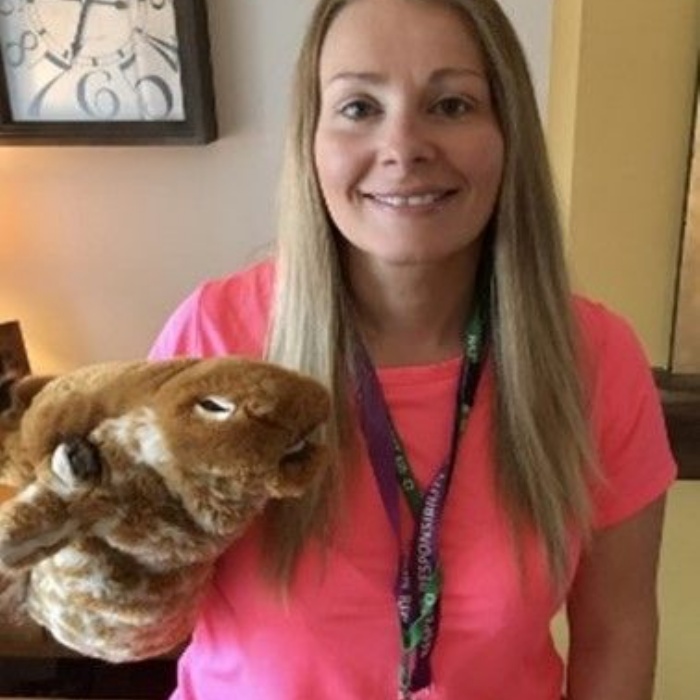
My name is Claire Farthing and I have worked within the early years sector for over 20 years now. Within that time practice has evolved along with the curriculum and research. However, one teaching tool that I consistently use is the use of Makaton and puppets within the classroom.
Makaton is a language system that uses signs and symbols to aid communication that is designed to be used alongside speech, in spoken word order. I have incorporated Makaton in my early year’s classroom for many years since having a child in my class who presented with selective mutism. I wanted to provide a non-threatening, inclusive way for this child to be able to communicate during social times but also for them to be able to make their basic needs known and to try to remove the risk of feeling lonely, frustrated and isolated. Despite Makaton being designed for people with Special Educational Needs it is much more widely used and includes people of all abilities. It became apparent very quickly that Makaton was a valuable tool to allow all children to communicate and is inclusive for all.
I started by incorporating Makaton at the beginning of each day during social times by singing and signing the register and engaging in small talk and going through the daily routine together. Alongside this I also introduced the use of a puppet and I found children who displayed with anxieties of speaking in front of a larger group became much more comfortable as it provided a safe way to share their thoughts, feelings and ideas.
We are now all very used to seeing visual timetables within a classroom setting, but historically these were not widespread so the use of Makaton provided an additional way to engage and develop their basic language.
Makaton promotes the growth of an inclusive environment where children can learn to progress or express themselves in an alternative way whilst their needs are being met. There isn’t a more rewarding feeling than a child who has been unable to communicate to be able to sign ‘good morning’ and make their lunch choice known independently during a social situation.
In addition, the use of a puppet can support learning and behaviour management in the early years and can be used in a playful manner. My puppet can be quite mischievous and can aid in reinforcing the expected behaviour as well as used as a learning tool by miscounting objects – we all know children love correcting others mistakes! Teaching in this way also supports PSED to model and reinforce social skills, respect and empathy.
Using a puppet alongside Makaton increases eye contact and can reduce frustration for some children who find it harder to communicate in some circumstances.
I have found using Makaton an effective teaching tool to improve English as a second language as it is designed to encourage and develop language and literacy skills as it can be a universal cue for children who find themselves in an environment with a new or unfamiliar language.
For older children I have taught Makaton signs through singing and we learn the signs together to match their favourite songs; this can be a fun way to introduce signing in a different way. Don’t be put off using puppets if you work with older children, I am always amazed at being in a year 4 class where they still love Gerald the Giraffe puppet making an appearance too and he has often been mentioned in Year 6 memories assembly when getting ready to move on to secondary school!
There are many ways to introduce Makaton to your classroom. I would recommend starting simple and learn one or two signs and build up from there. As discussed songs and rhymes are a good ways to learn simple signs. Learning at the same time as your children is a way of reinforcing to children that we are all learners and it can build their confidence when you, as the adult, make mistakes and learn from them. There are many excellent websites that offer free resources to take advantage of where you can learn the basics from. I would urge you to visit these sites and start introducing Makaton within your classroom setting, who knows where it will take you!

